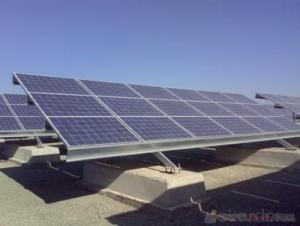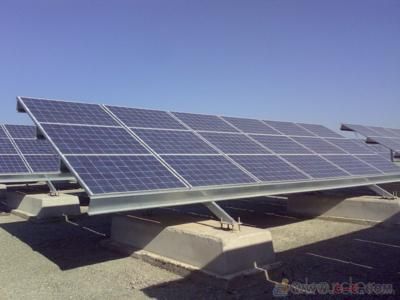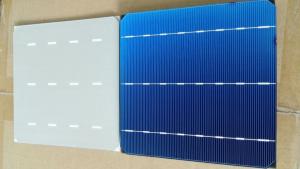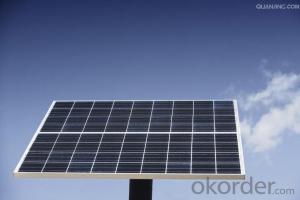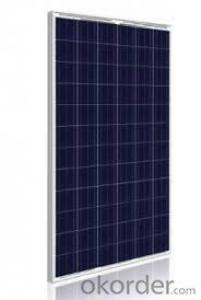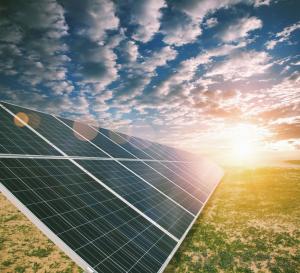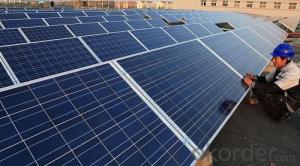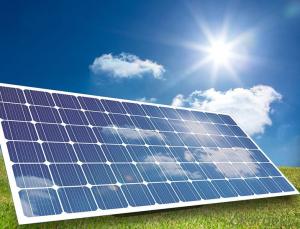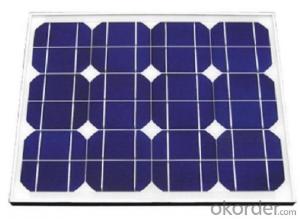Photovoltaic Pv Solar Cells - Monocrystalline Silicon Solar Cell Solar Panel 250w in China Good Price
- Loading Port:
- China Main Port
- Payment Terms:
- TT OR LC
- Min Order Qty:
- -
- Supply Capability:
- -
OKorder Service Pledge
OKorder Financial Service
You Might Also Like
Quick Details
| Place of Origin: | Model Number: | ||||
| Material: | Size: | Number of Cells: | |||
| Max. Power: | VOC: | cells: |
Packaging & Delivery
| Packaging Detail: | 22pcs/carton 264pcs/20ft container 672pcs/40ft container |
| Delivery Detail: | within 5 working days |
Specifications
1.250W Monocrystalline silicon solar panel
2.CE,ISO certification
3.excellent in quality and reasonable in price
250W Monocrystalline silicon solar panel/modules
1)High efficiency and good workmanship
2)excellent in quality and reasonable in price
3)High transmission rate,low iron and tempered glass
4)solar panel have high wind,easy installation and long life
5)Life time:20-25 years
6)Tempered glass laminated with aluminum frame
7)Construction
a)Front:high-transmission low-iron tempered glass
b)Back:TPT
c)Encapsulant:EVE
d)Frame:aluminum
e)Certification:CE ISO9001
- Q: How do solar cells handle voltage fluctuations in the grid?
- Solar cells do not directly handle voltage fluctuations in the grid. However, inverters, which are connected to solar cells, play a crucial role in managing voltage fluctuations by converting the direct current (DC) generated by solar cells into alternating current (AC) that matches the grid's voltage and frequency. Inverters also have the ability to regulate voltage and synchronize with the grid, ensuring stability and safe integration of solar power into the grid.
- Q: What is a monocrystalline solar cell?
- A monocrystalline solar cell is a type of solar panel that is made from a single crystal structure, typically silicon. It is known for its high efficiency and sleek, black appearance. The single crystal structure allows for better electron flow, resulting in greater energy conversion from sunlight into electricity.
- Q: Can solar cells be used in aircraft applications?
- Yes, solar cells can be used in aircraft applications. They are commonly used in solar-powered aircraft to convert sunlight into electrical energy, which can then be used to power the aircraft's systems and/or charge its batteries. Solar cells can help reduce the reliance on fossil fuels, increase flight time, and contribute to more sustainable aviation.
- Q: Can solar cells be used for powering submarines?
- Yes, solar cells can be used for powering submarines. However, due to the limited space available on submarines and the need for continuous power, solar cells alone may not be sufficient to meet all the energy requirements. Additional power sources such as batteries or fuel cells are typically used in combination with solar cells to ensure continuous power supply for submarines.
- Q: Can solar cells be used for powering electric fences?
- Yes, solar cells can be used for powering electric fences. Solar cells convert sunlight into electricity, which can then be stored in batteries and used to power electric fences. This makes them a reliable and sustainable option for powering fences in areas without easy access to a traditional power grid.
- Q: Can solar cells be installed on sloped surfaces?
- Yes, solar cells can be installed on sloped surfaces. In fact, solar panels are commonly installed on sloped rooftops to harness sunlight efficiently. However, the angle of the slope may affect the overall energy output, so it is important to consider the optimal tilt and orientation of the solar panels for maximum efficiency.
- Q: The working principle of solar cells includes the three processes
- The opposite of the electrical symbol of the photogenerated carriers in the solar cell pn junction built under the action of the electric field, the electron-hole pairs are separated, the electrons are concentrated on one side, the holes are concentrated on the other side, and the opposite sex charges are generated on both sides of the pn junction Of the accumulation, resulting in photogenerated electromotive force, that is, photovoltaic voltage.
- Q: Can solar cells be used for powering electric vehicle charging stations?
- Yes, solar cells can be used to power electric vehicle charging stations. Solar panels can generate electricity from sunlight, which can then be used to charge electric vehicles. This not only promotes the use of renewable energy but also reduces the carbon footprint of electric vehicles by eliminating the need for grid electricity.
- Q: Can solar cells be used in disaster recovery efforts?
- Yes, solar cells can be used in disaster recovery efforts. Solar cells can provide a reliable and sustainable source of electricity in areas affected by disasters, where traditional power grids may be damaged or inaccessible. They can be used to power emergency shelters, hospitals, communication systems, and other critical infrastructure, ensuring that essential services and relief efforts are not disrupted. Additionally, solar cells can be easily deployed and are not dependent on fuel supply, making them an ideal solution for disaster recovery efforts.
- Q: Is the Solar Power Photovoltaic Cells the same as PV cells modules?
- According to the size and scale of the photovoltaic power station, the PV modules can be composed of various sizes and different arrays.
Send your message to us
Photovoltaic Pv Solar Cells - Monocrystalline Silicon Solar Cell Solar Panel 250w in China Good Price
- Loading Port:
- China Main Port
- Payment Terms:
- TT OR LC
- Min Order Qty:
- -
- Supply Capability:
- -
OKorder Service Pledge
OKorder Financial Service
Similar products
Hot products
Hot Searches
Related keywords
